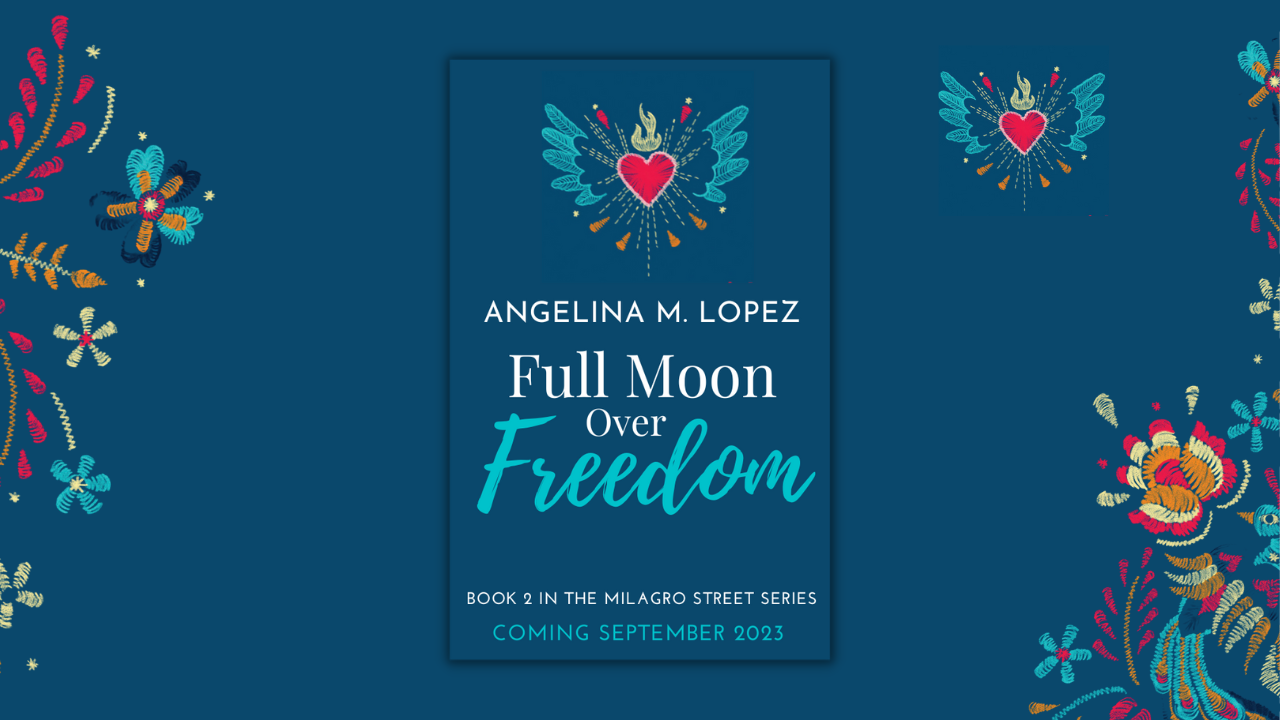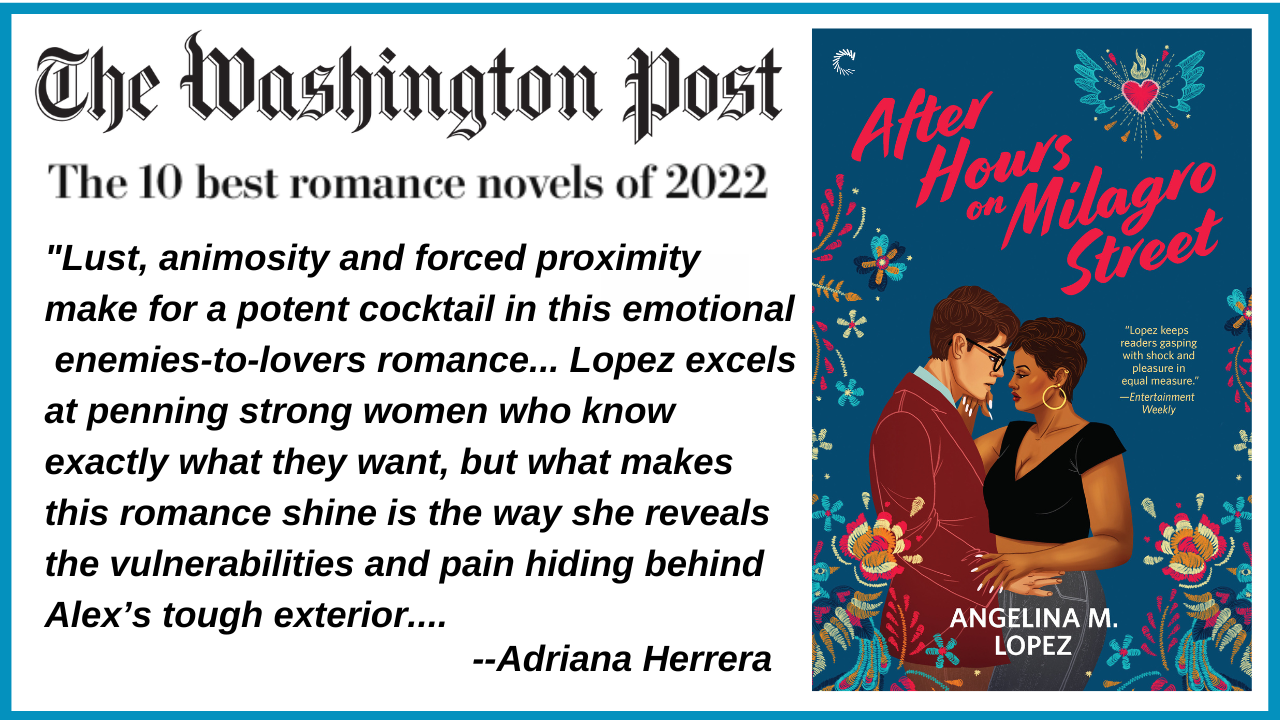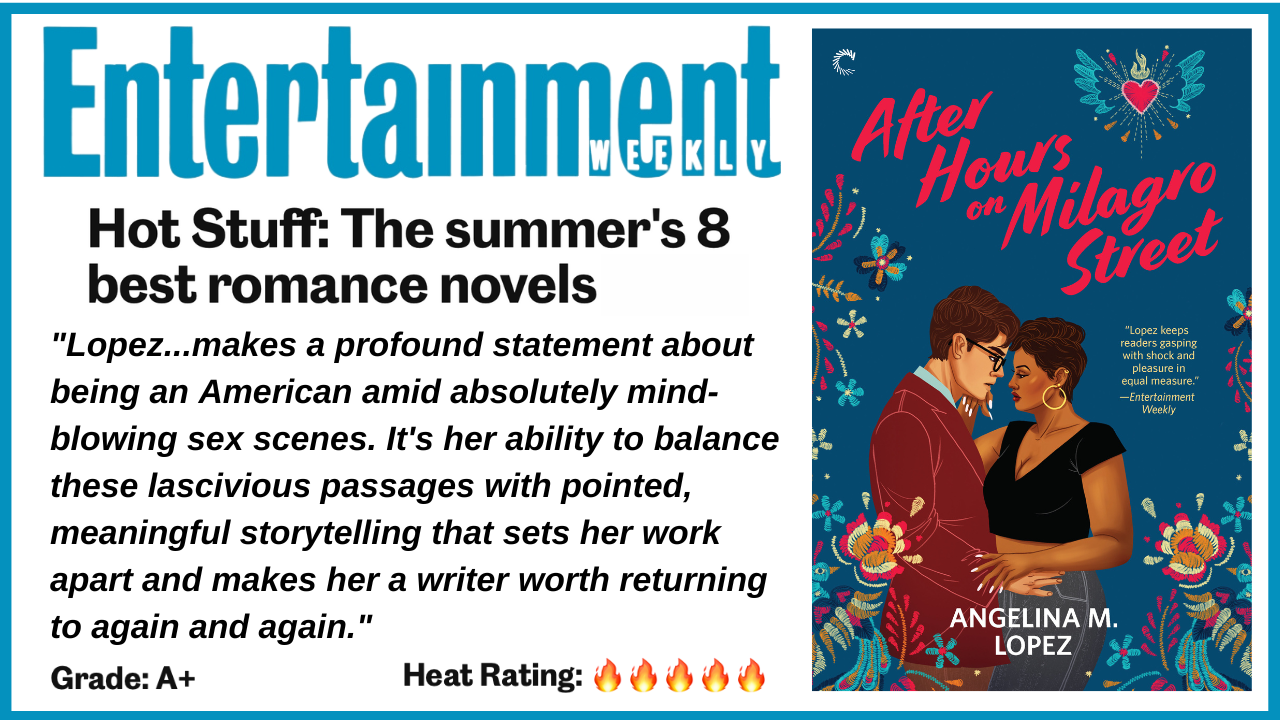With its talk of witches, a wailing ghost by the river, and a snarling phantom dog in the shadows, my latest book, Full Moon Over Freedom, is a perfect read for spooky season. The first book in the Milagro Street series, After Hours on Milagro Street, also had things that went bump in the night.
When I proposed the Milagro Street series in 2020, I didn’t know how popular spooky contemporary books were going to be. I didn’t make these books witchy for witchy’s sake. The supernatural element in the Milagro Street series is there for an important reason.
A reflection of my culture and family
I developed the Milagro Street series in the shadows of the 2020 election, when we’d elected a man who made brown people feel unwelcome and unsafe in this country and who had enough voter support that they might elect him again. I felt my family’s story, about Mexican-Americans who’ve lived and contributed to a small town in the Midwest for several generations, was an important story to make known. We’ve been here in the heart of the country, I wanted people to know. We’ll continue to be here and this country is better for it.
If I was going to tell this story about Mexican-Americans in the heartland, then I had to figure out what defined us. What defined my family, my culture, and my hometown, and what aspects of that would be interesting to share in a fiction novel?
My list of important and interesting details included the fact that so many of my family have committed to the same area for so long, the big family gatherings on Sunday after mass, THE FOOD (my grandmother was the best cook and I still dream of her tortillas, sopa, and frijoles), the dynamics of a large family firmly planted in the U.S. but with a reverence for their Latinidad, the interesting small-town folks with long memories, and the fascinating history of my hometown (contributed the first monkey sent into space from its zoo, retained many crumbling mansions from its oil-wealth days).
I also highlighted my family’s beliefs in the supernatural.
I wrote:
We all know the cement plant is haunted.
Multiple people in my family have heard and seen La Llorona along the banks of the Verdigris River. It’s not even questioned.
The upper floor of my aunt and uncle’s house is haunted and the whole family has seen the ghost.
My grandmother would cross herself as we passed certain places in town but then wouldn’t tell me why.
The ghost cars out on the highway. Those ghost cars were why we never, ever, ever even thought about hitchhiking.
Lover’s Leap out by the dam.
Both my dad and great-aunt and uncle contributed stories to a ghost book about Kansas
The “ordinariness” of all the superstition and supernatural. It just is. It’s barely even interesting, except if you want to tell stories to terrify the little cousins or your white friends.
It just is
When I sent the proposal for the series to my editor, her first, gentle red flag was, “Is this going to be a paranormal book? Are they going to be talking to ghosts?”
I realized then there was a cultural divide between how my people perceived entities on the other side of the veil and how my editor perceived them. To my family, that veil is very thin. We believe we’re eating the body of Christ at Mass. We believe those we lost walk with us. I grew up believing that God was a force for good who could be called upon when in need. He was a daily presence, thought about as a friend and mentioned often and readily. My feelings about God and the Catholic Church have changed as I’ve gotten older, angrier, and more frustrated, but it doesn’t erase the understanding of how many in my family think of him and the world of saints, good and ill-intentioned entities, and lost loved ones.
That they surround us and affect us is just understood.
When I talk about brujas and ghosts and cadejos in the Milagro Street series, I’m not just talking about witches and spooks. I’m underlining an important part of my family’s culture, a culture that is recognized in many communities of color. It’s a perspective that only someone who’s part of that community, who’s had the lived experience, can give.
“Just trust me,” I wrote back to my editor. Thankfully, she did.
Readers who get it
What’s been truly rewarding in writing about the supernatural in this specific, personal way is the readers who’ve seen themselves, their families, their culture, and their beliefs reflected in it. Booktoker Mayte Lisbeth, with 133k followers on her @mayte.lisbeth Tik Tik account, said in her video review about Full Moon Over Freedom:
“My main favorite thing about this book…is the way Angelina uses magic. It’s not the sci-fi fantasy magic that we think of. It feels like a magic that I recognize. Like the healing hands of an elder, the candle that people light on an altar. It is the magic of childhood monsters in stories and, like, the belief of that being real. For me, it felt so familiar and I love that the magic is how we explore this woman getting back to her sense of self.”
You can watch the entire review here.
I write pretend people and make-believe scenarios, but in the Milagro Street street series, I molded these people and scenarios out of a Mexican-American reality that we haven’t gotten to see reflected often in books or film. That readers can say “it feels like a magic I recognize” is one of my proudest writing accomplishments.




































